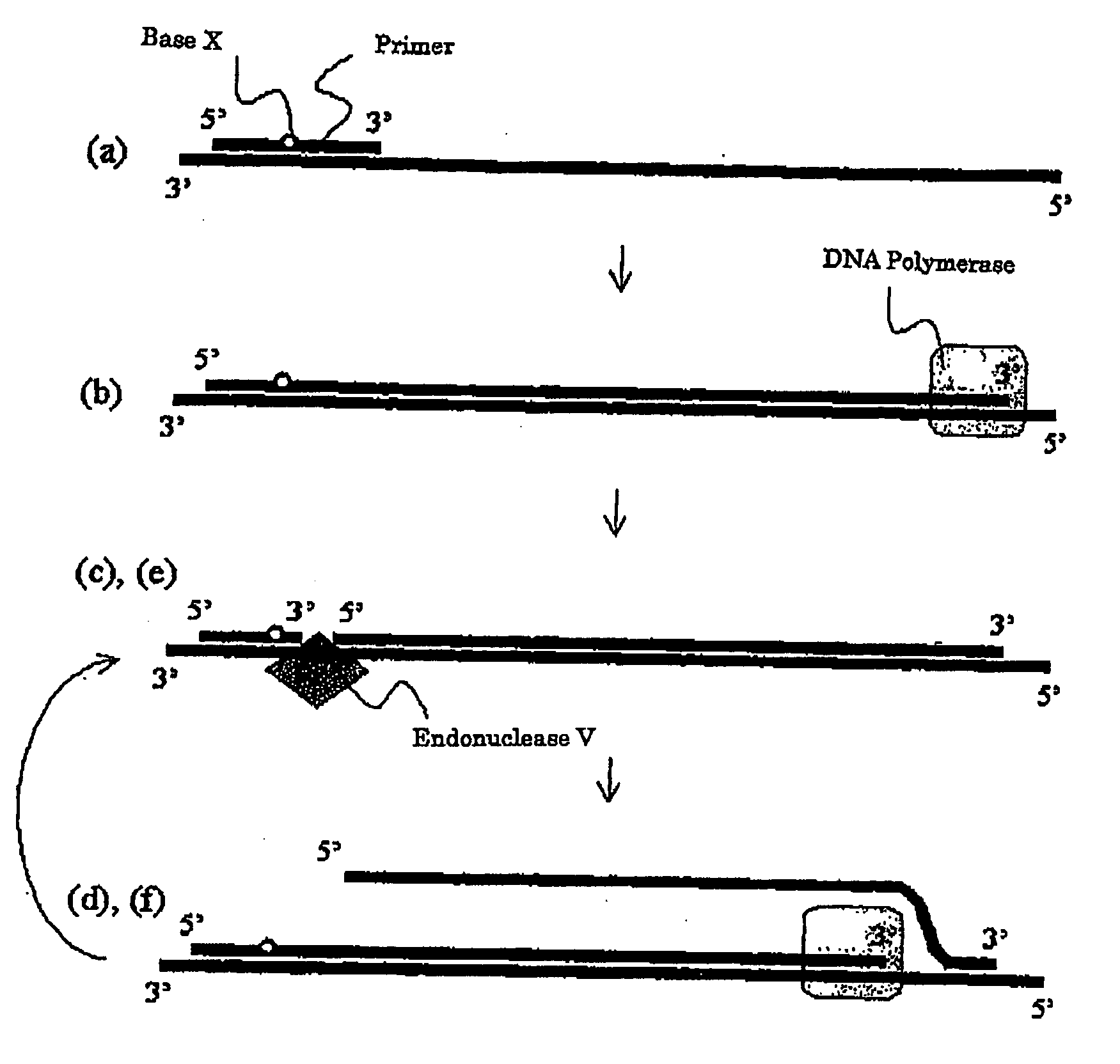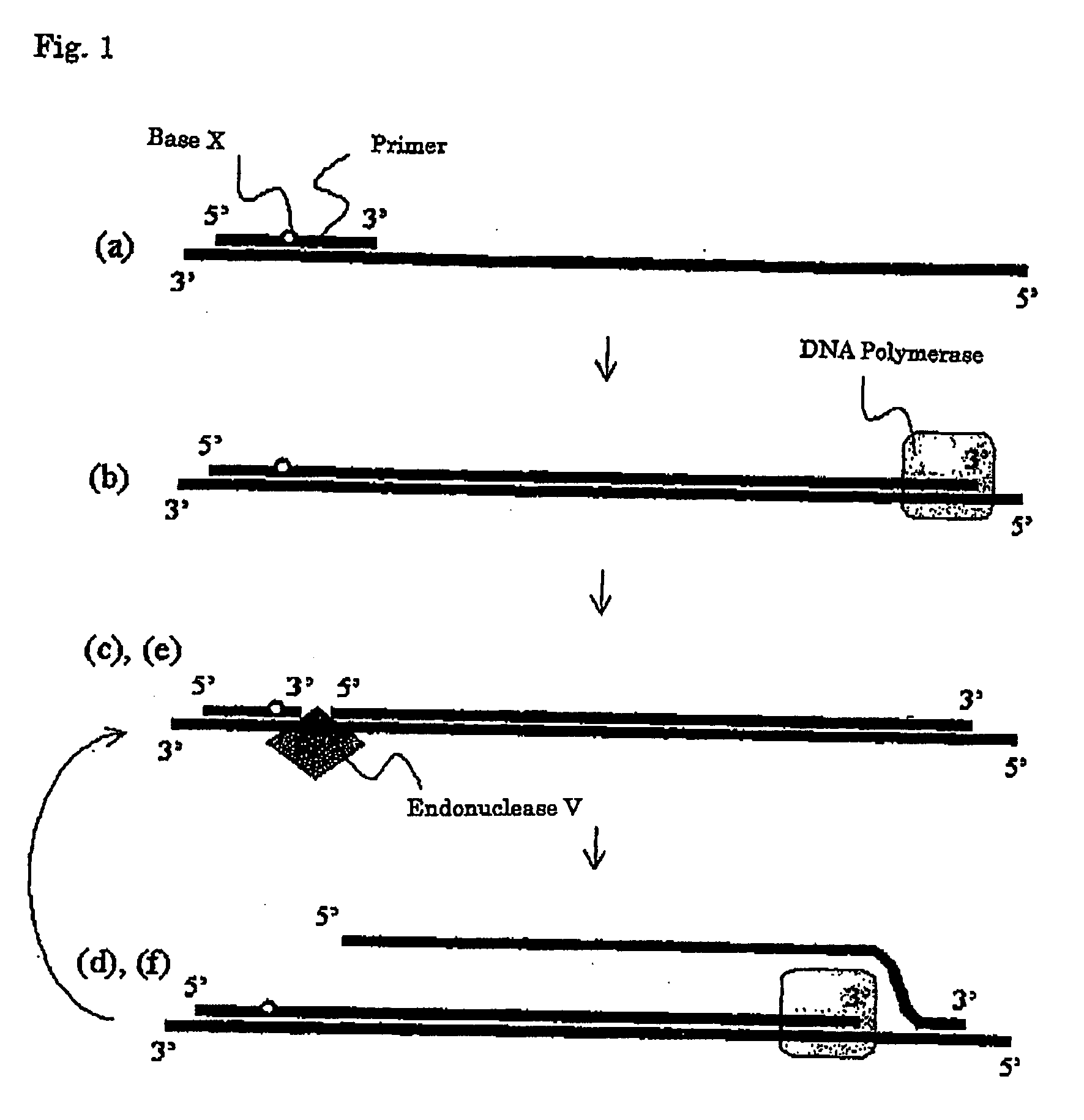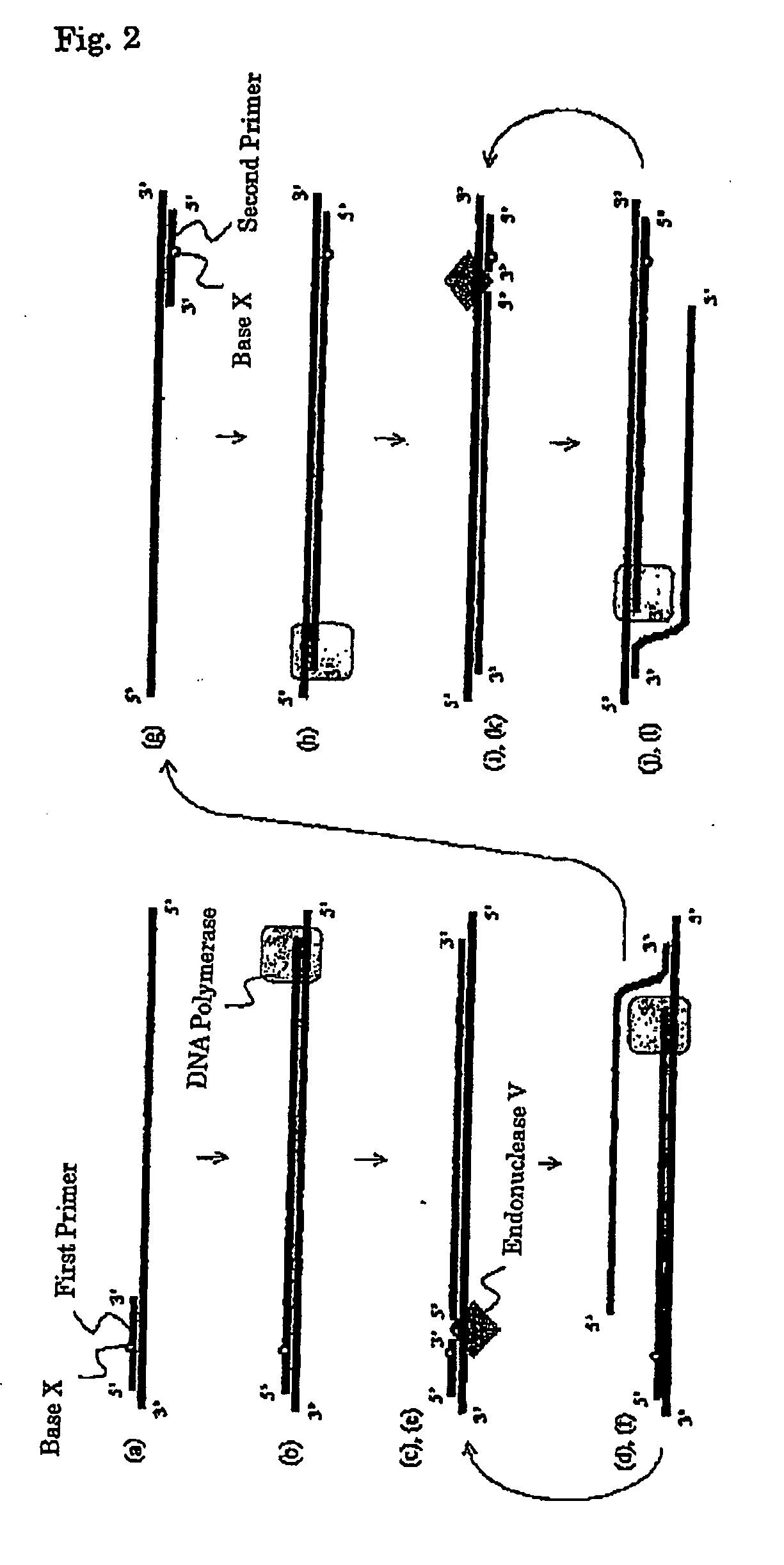Method for amplification of nucleotide sequence
a nucleotide sequence and amplification technology, applied in the field of nucleotide sequence amplification, can solve the problems of increasing the cost of the temperature cycling device which controls the reaction temperature and time repeatedly and accurately, prolonging the necessary time until the completion of the whole reaction step, etc., and achieving the effect of increasing the cos
- Summary
- Abstract
- Description
- Claims
- Application Information
AI Technical Summary
Benefits of technology
Problems solved by technology
Method used
Image
Examples
embodiment 1
(1) Embodiment 1
A Case of Using at Least One Primer
[0207]A preferable embodiment of the present invention is a nucleic acid amplification method which comprises the following steps (a) to (f) “wherein the steps (c) to (f) are continuously repeated”:
[0208](a) a step for allowing at least one kind of a primer to cause annealing to a template nucleic acid (wherein said primer is an oligonucleotide primer which has a nucleotide sequence which is substantially complementary with the nucleotide sequence of a template nucleic acid and also contains at least one base X which can be recognized by endonuclease V);
[0209](b) a step for forming a double-stranded nucleic acid from the primer annealed to the template nucleic acid in the step (a), by synthesizing a primer elongation chain complementary with the template nucleic acid by a DNA polymerase;
[0210](c) a step for providing the primer elongation chain with a new 3′ end, through the recognition of a base X in the primer elongation chain of ...
embodiment 2
(2) Embodiment 2
A Case of Using a First Primer and a Second Primer
[0217]A preferable embodiment of the present invention is a nucleic acid amplification method which comprises the following steps (a) to (l) wherein the steps (c) to (f) and steps (i) to (l) are continuously repeated:
[0218](a) a step for allowing at least one kind of a first primer to cause annealing to a template nucleic acid (wherein said primer is an oligonucleotide primer which has a nucleotide sequence substantially complementary with the nucleotide sequence of a template nucleic acid and also contains at least one base X which can be recognized by endonuclease V);
[0219](b) a step for forming a double-stranded nucleic acid from the first primer annealed to the template nucleic acid in the step (a), by synthesizing a primer elongation chain complementary with the template nucleic acid by a DNA polymerase;
[0220](c) a step for providing the primer elongation chain with a new 3′ end, through the recognition of a base...
embodiment 3
(3) Embodiment 3
A Case of Using a First Primer and a Second Primer
[0233]A preferable embodiment of the present invention is a nucleic acid amplification method which comprises the following steps (a) to (y) wherein the steps (c) to (f), (i) to (l) and (m) to (y) are continuously repeated. According to the present embodiment, it is possible to effect re-annealing of nucleic acid sequence of the first primer to the nucleic acid chain released by the strand displacement reaction in the following steps (j) and (l) where the second primer chain is elongated:
[0234](a) a step for allowing at least one kind of a first primer to cause annealing to a template nucleic acid (wherein said primer is an oligonucleotide primer which has a nucleotide sequence substantially complementary with the nucleotide sequence of a template nucleic acid and also contains at least one base X which can be recognized by endonuclease V);
[0235](b) a step for forming a double-stranded nucleic acid from the first prim...
PUM
| Property | Measurement | Unit |
|---|---|---|
| Fraction | aaaaa | aaaaa |
| Electrical resistance | aaaaa | aaaaa |
| Melting point | aaaaa | aaaaa |
Abstract
Description
Claims
Application Information
 Login to View More
Login to View More - R&D
- Intellectual Property
- Life Sciences
- Materials
- Tech Scout
- Unparalleled Data Quality
- Higher Quality Content
- 60% Fewer Hallucinations
Browse by: Latest US Patents, China's latest patents, Technical Efficacy Thesaurus, Application Domain, Technology Topic, Popular Technical Reports.
© 2025 PatSnap. All rights reserved.Legal|Privacy policy|Modern Slavery Act Transparency Statement|Sitemap|About US| Contact US: help@patsnap.com



